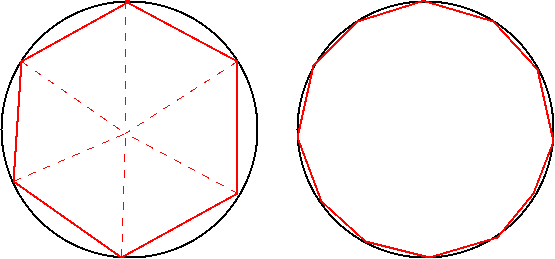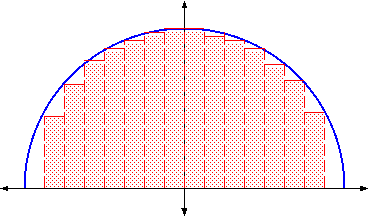
Originally, the Greeks used this idea to find the area of a circle, called the method of exhaustion. It is geometrically clear how to find the area of a square (width × height), and if you think about it, by breaking it up into triangles, you can find the area of any regular polygon (like a pentagon, a hexagon, and octagon, etc.). But it's not so simple to find the area of a circle (those of you thinking ``It's just pr2 '' are missing the problem of where that formula came from). What they did was to take regular polygons, inscribed in a circle, measure the area of each one, and take progressively more sides (which gives a polygon that looks progressively more like a circle), and in the limit as the number of sides went to infinity, they could find the area of the circle.

We don't have to deal with those hard-to compute areas of polygons; we can instead
come up with an equivalent, but more modern, way to do the same measurement.
We can use just the top half of the circle, and double it to get the whole area.
If the circle has radius a , then the circles has equation x2+y2 = a2 ,
or, since we have the top half and so y > 0 ,
|

Copyright (c) by David L. Johnson, last modified
On 2 May 2000, 11:53..